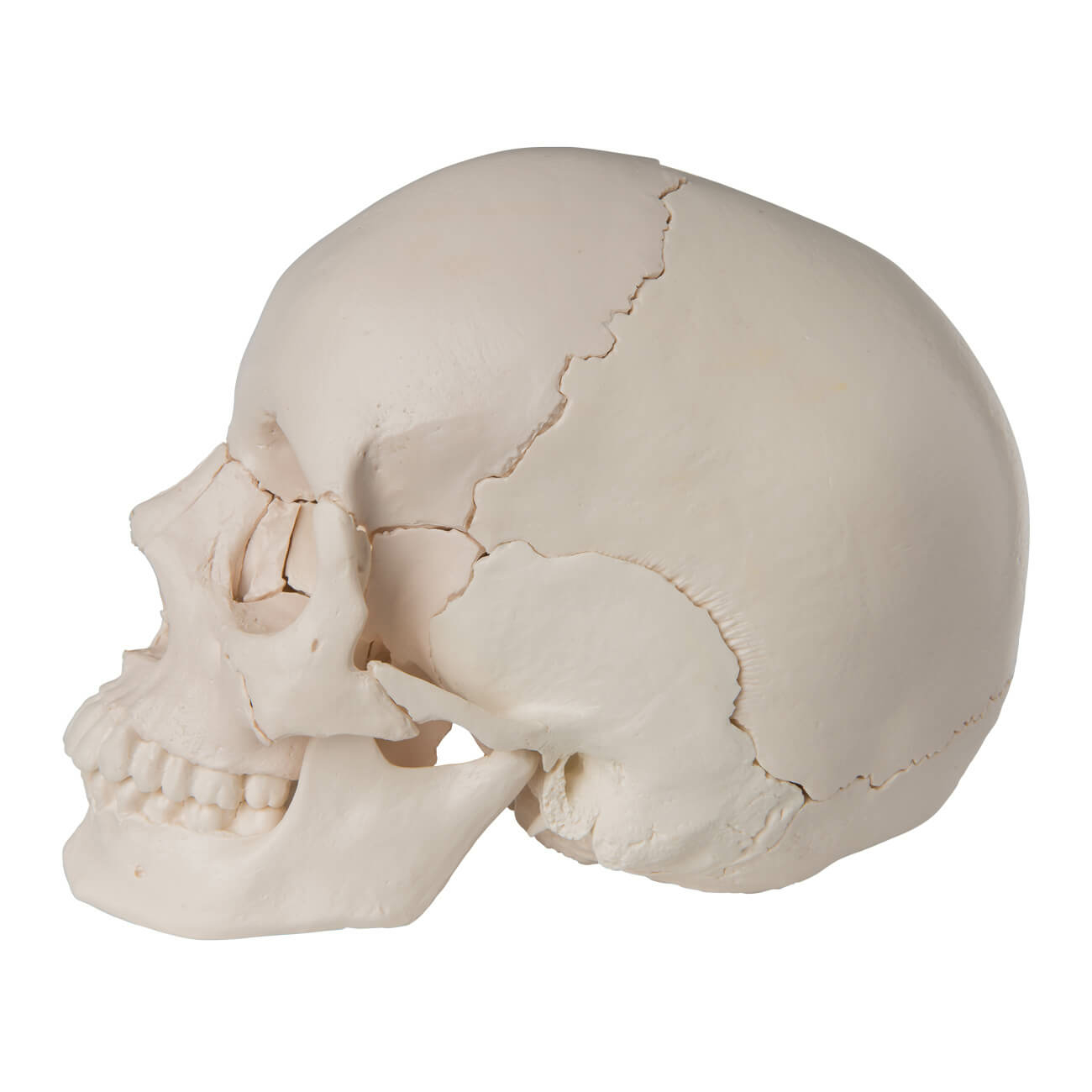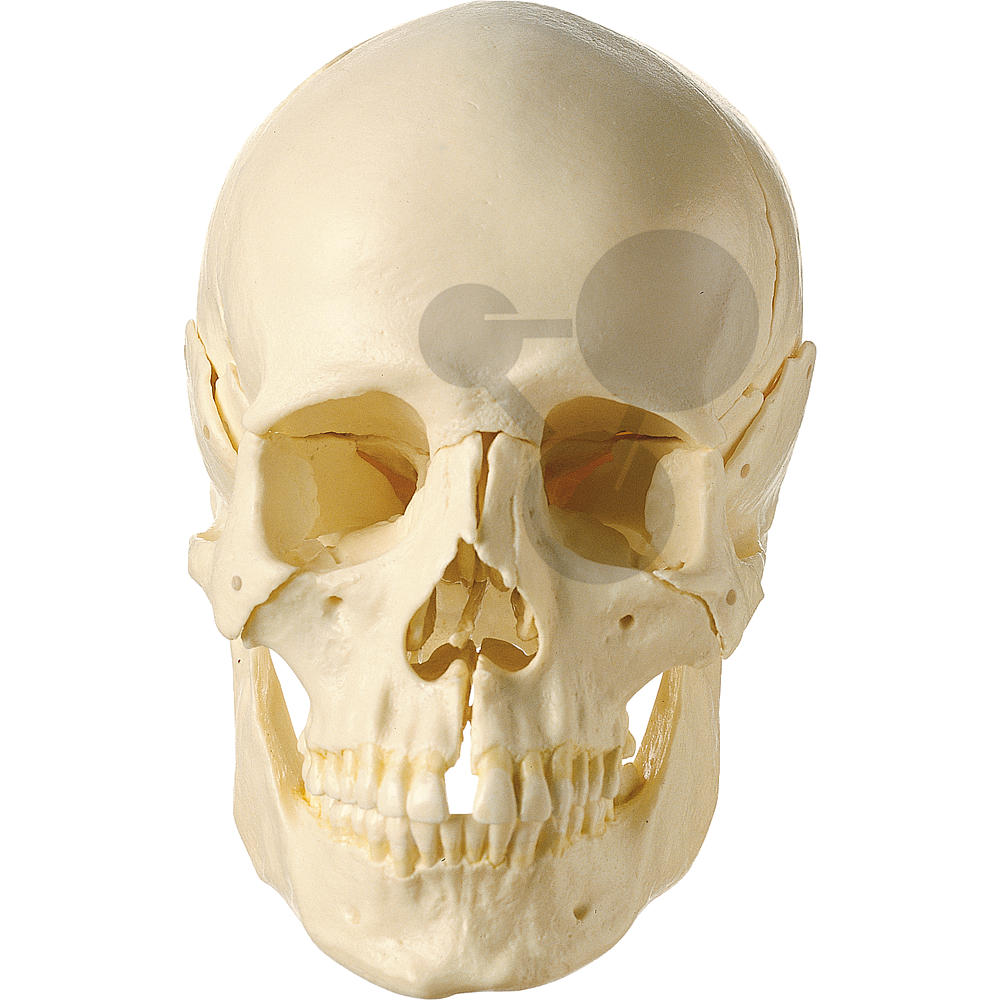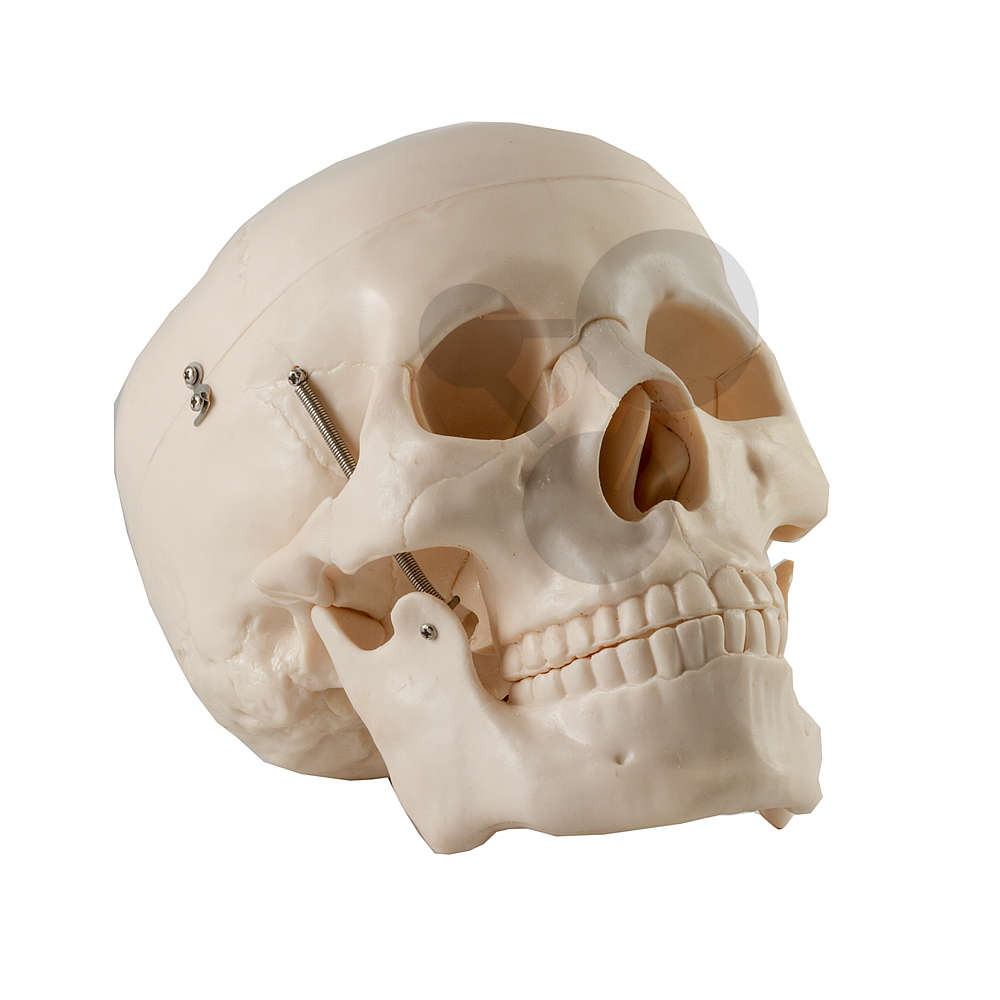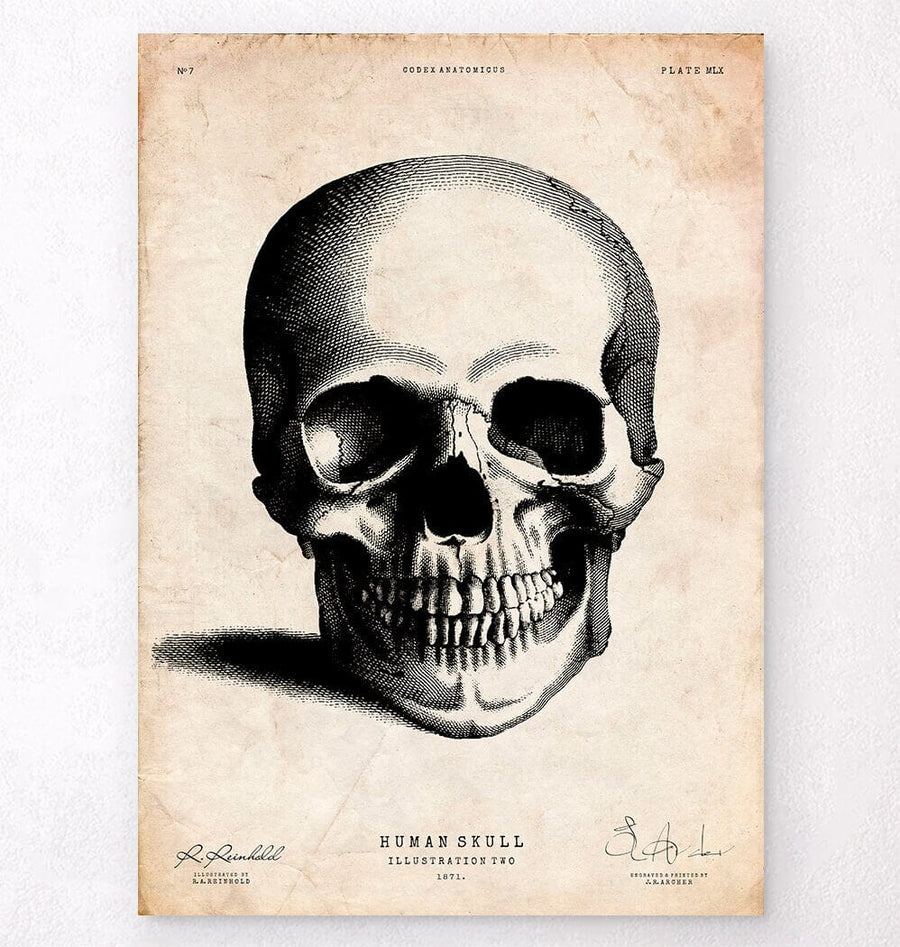TREPANED HUMAN SKULL

Unique medical human skull which underwent ante-mortem trephination, as evidenced by the hole at the left rear of the skull, we see an advanced healing process, marked by the blunting of the edges and the formation of cortex on the surface which allows us to deduce survival after trepanation.
This old medical study human skull is in excellent condition and has very beautiful characteristics. Most of the dentition is present, while several teeth are missing postmortem. The orbits are perfectly preserved. The calvary is cut out and fixed with pins while the mandible is articulated on springs.
This skull is unique in that it underwent ante-mortem trepanation, as evidenced by the hole at the left rear of the skull, we see an advanced healing process, marked by the blunting of the edges and the formation of cortex. on the surface which makes it possible to deduce survival after trepanation.
Trepanation is an ancient surgical procedure that involves drilling a hole in the skull by removing part of the bone, usually to access the brain. This practice has been observed in various civilizations for millennia, often to treat head trauma, medical conditions, or even religious rituals. It was carried out with rudimentary tools, sometimes with the aim of releasing demons or improving the patient's well-being. Trepanation is still studied to better understand its use and implications in the history of medicine and human culture. Today it is practiced only for specific medical purposes and under strict controls.
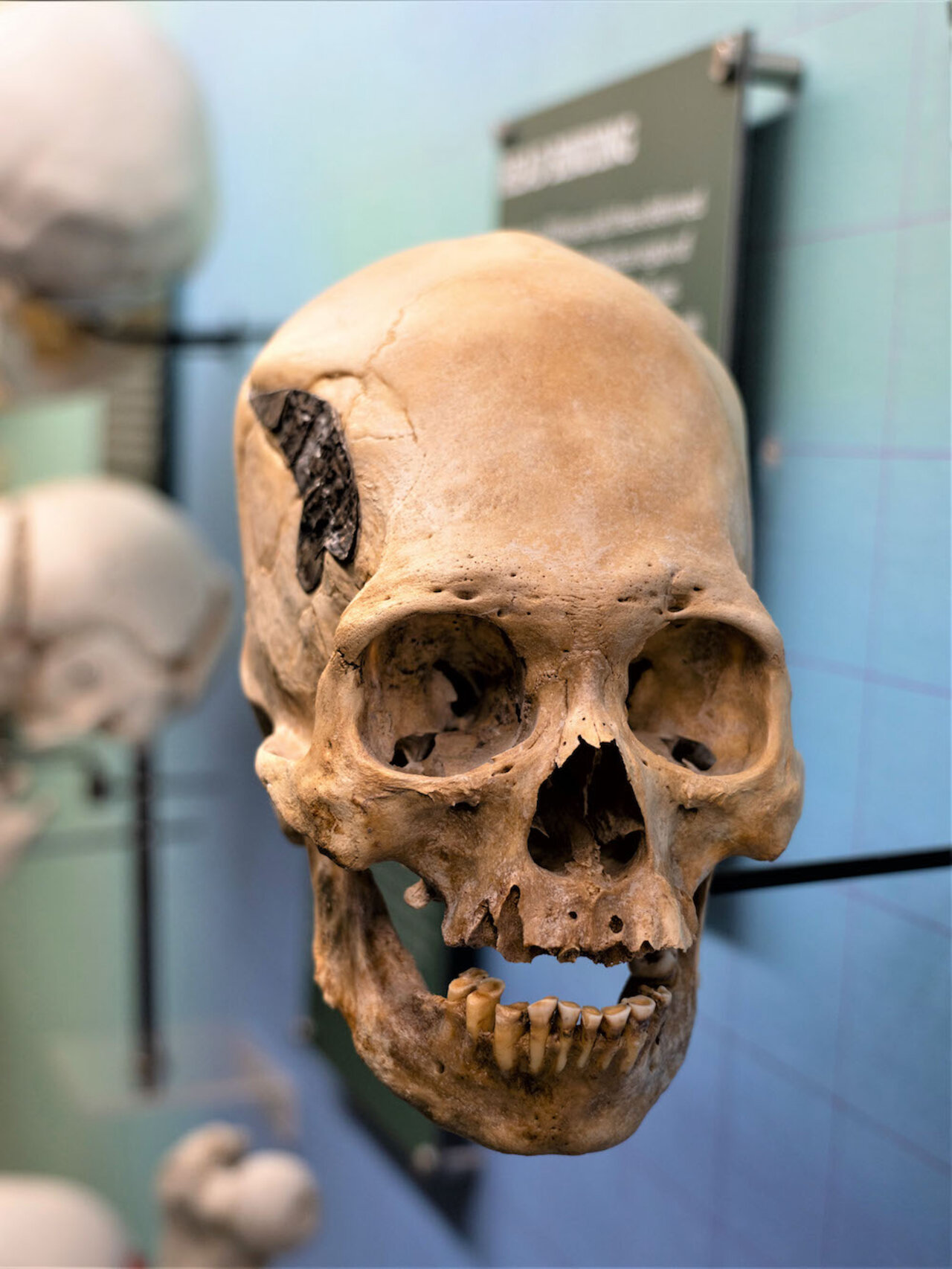
Ancient Peruvian skull with metal implant baffles scientists

You Need It Like a Hole in the Head: The Ancient Medical Art of Trepanation
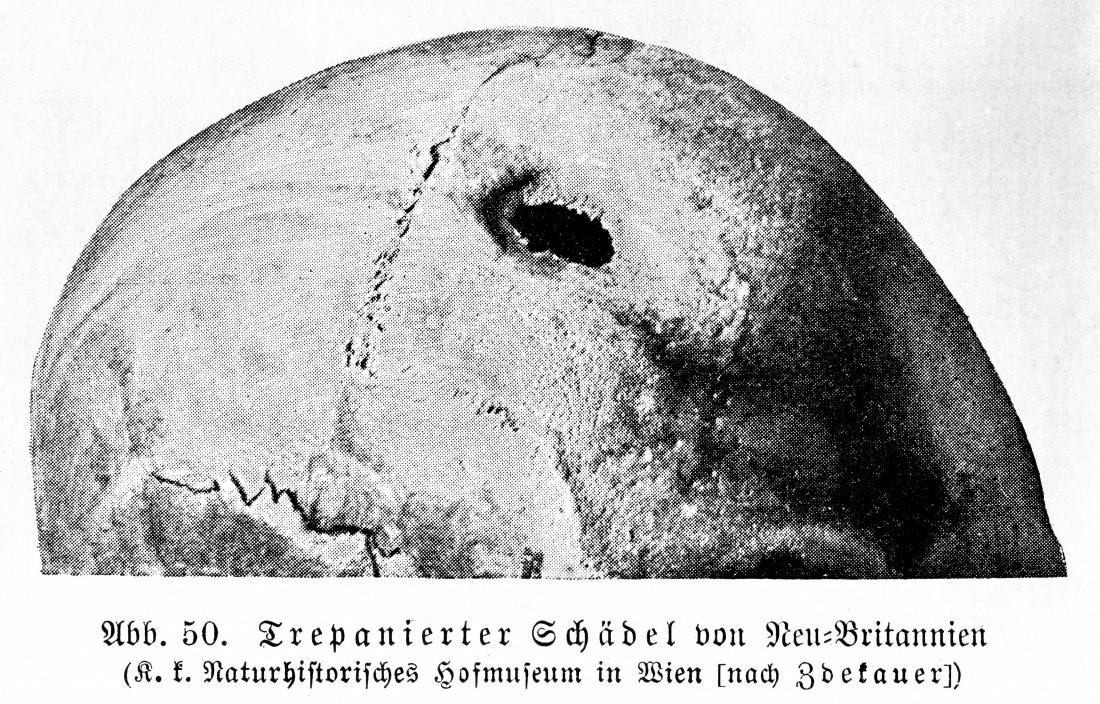
Trepanation: Our ancestors' idea of neurosurgery

TREPANED HUMAN SKULL

Trephination: What Is It, Its Use, and More

Trepanned skull · Visitmuseum · Catalonia museums

Halloween Special - So you want a hole drilled in your head? - The Lifestyle Blog for Modern Men & their Hair by Curly Rogelio

New insights in the investigation of trepanations from the Carpathian Basin
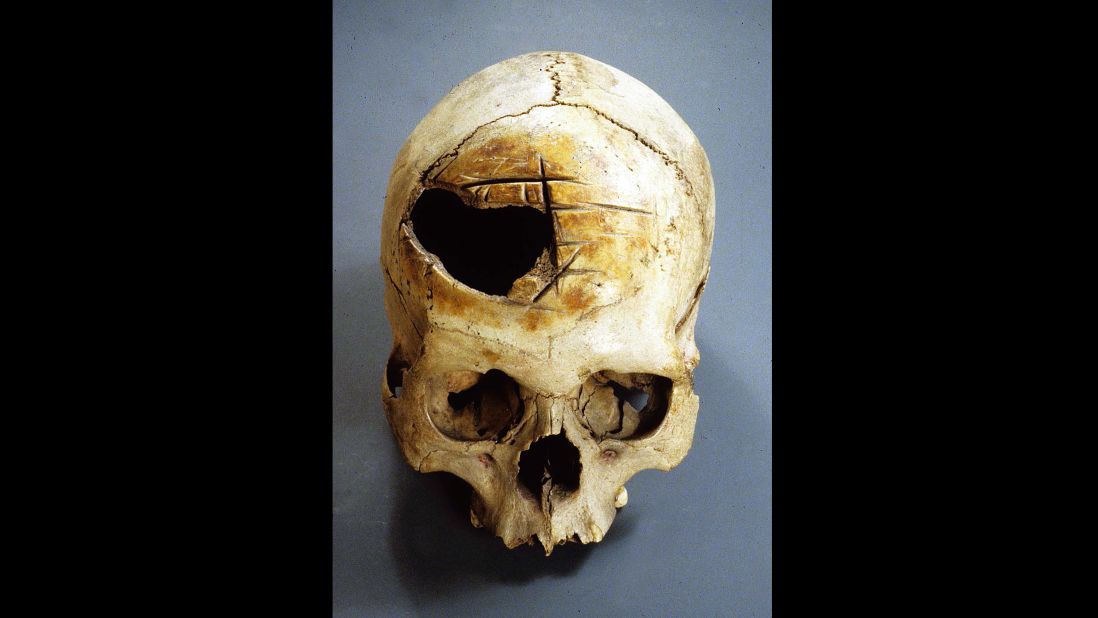
Were mystery holes in skulls an ancient aspirin?





